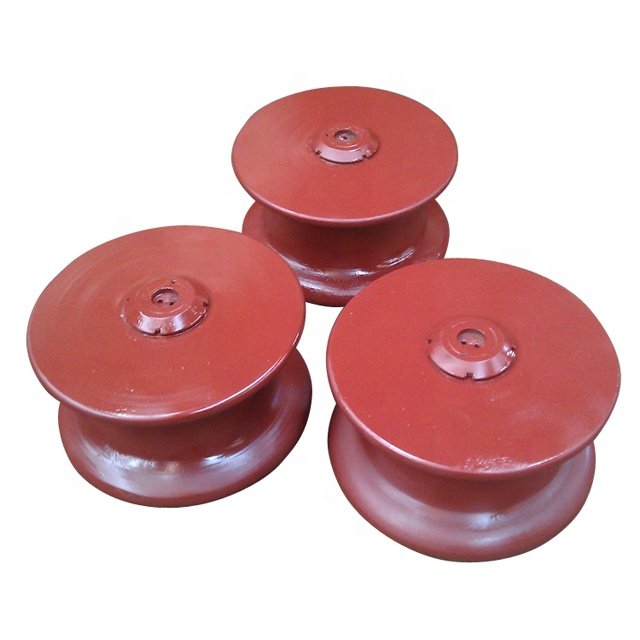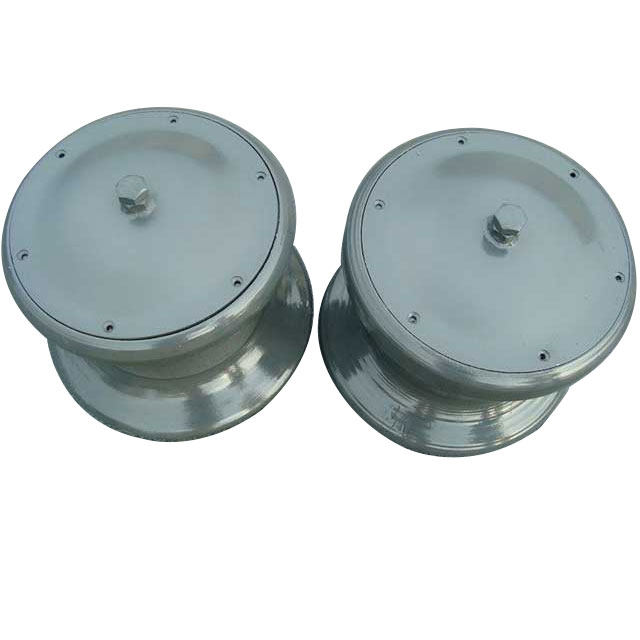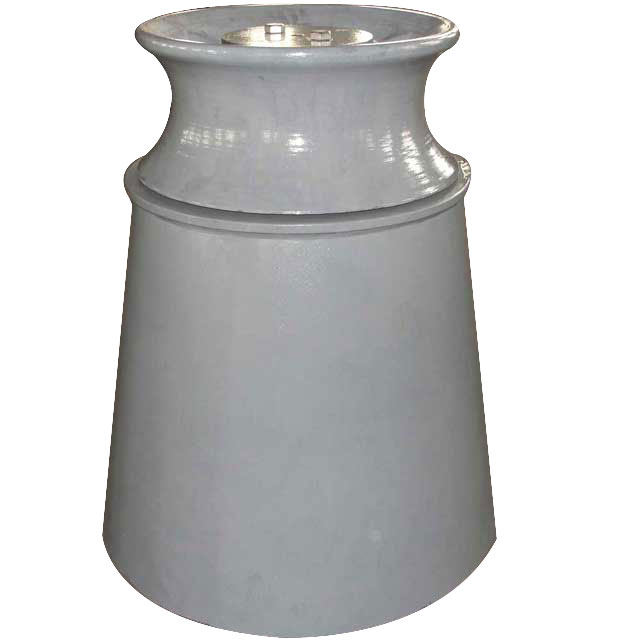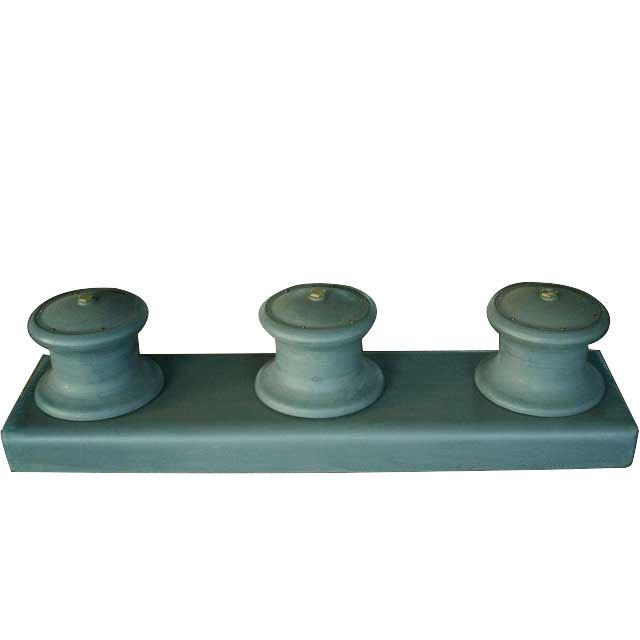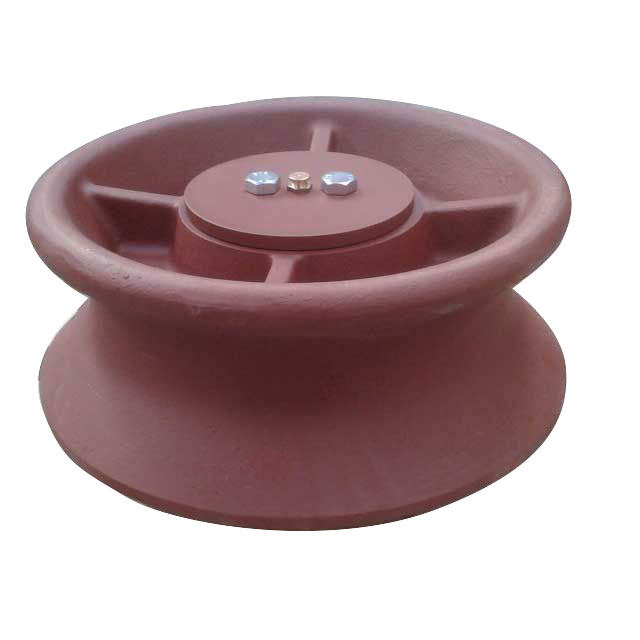Vertical vs. Horizontal Roller Fairleads: Choosing the Right Type for Your Application
Roller fairleads are often used in applications where the load needs to be pulled or guided through a system, and they come in two primary configurations: vertical roller fairleads and horizontal roller fairleads. Both designs serve similar functions but have distinct advantages depending on the application.
Table of Contents
What are Roller Fairleads
Roller fairleads are mechanical components used to guide cables, ropes, or chains along a specific path to prevent tangling, excessive wear, or misalignment. They typically consist of one or more rollers mounted on a frame that allows the rope or cable to pass through with minimal friction. The main difference between vertical and horizontal roller fairleads lies in the orientation of the rollers and the direction in which the cable or rope is being guided.
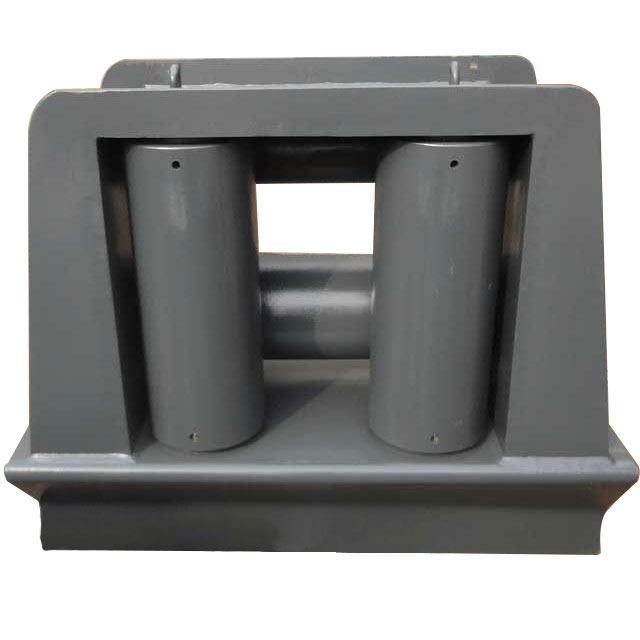
Understanding Vertical Roller Fairleads
Vertical roller fairleads are essential components used to guide and control the movement of ropes, cables, or chains in various systems, particularly when the direction of motion is vertical. These fairleads consist of rollers arranged in a vertical orientation, allowing cables or ropes to pass smoothly while minimizing friction, wear, and misalignment. Typically used in applications like lifting, hoisting, and marine anchoring, vertical roller fairleads provide an efficient solution for managing vertical loads.
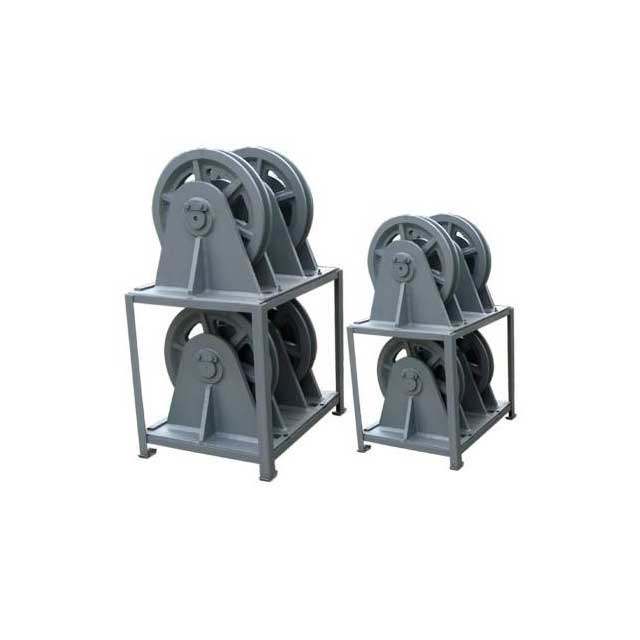
Advantages
- Efficient Cable Management in Vertical Movements: Vertical roller fairleads are designed to guide cables, ropes, or chains in a vertical direction, ensuring smooth operation when cables are reeled in or out vertically. This orientation is optimal for systems where vertical force is applied, such as cranes and winches.
- Reduction in Wear and Tear: Since the cable or rope moves along a vertical axis, the bending of the material is minimized. This significantly reduces friction and wear, leading to a longer lifespan for cables and ropes. By decreasing the chances of excessive bending, vertical roller fairleads help in preserving the integrity of the material being moved.
- Compact Design: Vertical roller fairleads are generally more compact compared to their horizontal counterparts. Their vertical orientation is often well-suited for confined spaces where horizontal movement would not be feasible. This makes them an ideal choice for applications where space is a premium, such as in marine winches or hoists.
- Enhanced Load Stability: The vertical design helps maintain stability while guiding heavy loads, especially in systems like elevators or cranes. By keeping the cable aligned properly, vertical roller fairleads contribute to the overall stability and safety of the system.
- Prevention of Cable Crossovers: In winching or lifting operations, there is a risk of cables crossing each other, which can cause jams or damage. Vertical roller fairleads help prevent this by ensuring that cables follow a smooth, straight path, avoiding the risk of entanglement.
Limitations
- Limited Flexibility for Lateral Movements: Vertical roller fairleads are optimized for vertical cable movement and may not perform as effectively in applications where lateral (side-to-side) movement or direction changes are required. They are not suitable for systems that need to manage complex directional shifts.
- Space Requirement for Mounting: While the design is compact, the mounting configuration of vertical roller fairleads still requires some vertical space. In systems where overhead space is limited, such as in small machinery or confined environments, this could be a limitation.
- Less Ideal for Multi-Directional Applications: Vertical fairleads are not ideal for systems that require multi-directional cable guidance, as they are designed with a fixed orientation. For systems needing frequent direction changes or guiding of cables in multiple planes, horizontal or multi-directional fairleads might be more appropriate.
- Overhead Stress on the System: In certain applications, like cranes, the vertical fairlead must support the entire weight of the load from above, which can place significant stress on the system. If not adequately maintained, this could lead to premature wear or failure of the fairlead or surrounding components.
Common Applications
1. Marine Vessels
Vertical roller fairleads are commonly used in marine applications, such as in anchor winches or mooring systems. In these systems, the anchor line or mooring rope needs to be managed as it is reeled in or out vertically. The smooth operation of the fairlead prevents damage to the rope and ensures that the cable is properly aligned when deployed.
Example: On a ship, vertical fairleads guide the anchor chain as it is released and retrieved, preventing excessive wear or entanglement in the winch mechanism.
2. Cranes and Hoisting Systems
Vertical roller fairleads are frequently used in crane and hoist systems to manage the movement of cables, ropes, or chains. When lifting heavy loads, vertical fairleads ensure that the cable is guided smoothly through the system, reducing the chances of misalignment or excessive bending, which can cause cable wear.
Example: Tower cranes use vertical roller fairleads to control the cable that lifts materials to great heights while ensuring smooth operation.
3. Elevator Systems
Elevators rely on vertical roller fairleads to guide the cables that raise and lower the elevator car. The fairlead ensures that the cables move efficiently in the vertical direction, preventing any misalignment that could cause operational issues or safety hazards.
Example: Vertical roller fairleads are used in the machinery room of an elevator system to guide the cables that control the elevator’s movement.
4. Mining and Material Handling
Vertical roller fairleads are also found in mining and material handling applications, particularly in systems that move heavy materials vertically. This includes lifting mechanisms like hoists used in mines to pull material from deep underground or moving containers in warehouses and factories.
Example: In mining, vertical roller fairleads guide the hoist rope as it pulls material to the surface from deep tunnels.
5. Fishing and Trawling
In commercial fishing operations, vertical roller fairleads are used to guide the ropes or cables that control trawl nets. The fairleads help prevent tangling of the cables as they move in and out of the water vertically, ensuring the nets operate efficiently.
Example: On fishing trawlers, vertical roller fairleads help manage the movement of the net cables, ensuring they are deployed and retrieved correctly.
6. Lifting Equipment for Construction Sites
Lifting equipment used in construction sites, such as hoists or elevators, often incorporate vertical roller fairleads to control the movement of ropes or cables. These systems are used to lift construction materials, tools, and even personnel to various levels of a building.
Example: Vertical roller fairleads guide the rope that controls the hoist in a building construction site, ensuring materials are lifted vertically with precision.
Understanding Horizontal Roller Fairleads
Horizontal roller fairleads are vital components in many industrial systems where cables, ropes, or chains need to be guided or moved horizontally. These fairleads are typically designed with rollers positioned horizontally to ensure smooth and efficient movement of the rope or cable along a straight or curved path. Horizontal roller fairleads are commonly used in systems that require lateral movement, such as in towing, cable spooling, and conveyor operations.
Key Features
- Roller Orientation: The most distinguishing feature of horizontal roller fairleads is the horizontal orientation of the rollers. These rollers are aligned parallel to the ground, guiding cables or ropes along a horizontal axis, making them ideal for applications where the direction of motion is lateral rather than vertical.
- Frame and Structure: Horizontal roller fairleads consist of a sturdy frame that holds one or more rollers, which allow the rope or cable to pass through while minimizing friction and wear. The frame is typically designed to withstand high loads and provide stability to the moving cable, even in demanding environments.
- Adjustable Designs: Many horizontal roller fairleads feature adjustable roller positions to accommodate different cable diameters or system configurations. This flexibility makes them versatile and adaptable to various cable management needs.
- Smooth Movement: The rollers in horizontal fairleads are designed to provide smooth and even movement of the cable or rope. By reducing friction between the cable and the frame, horizontal roller fairleads help maintain the integrity of the material being moved, preventing unnecessary wear and tear.
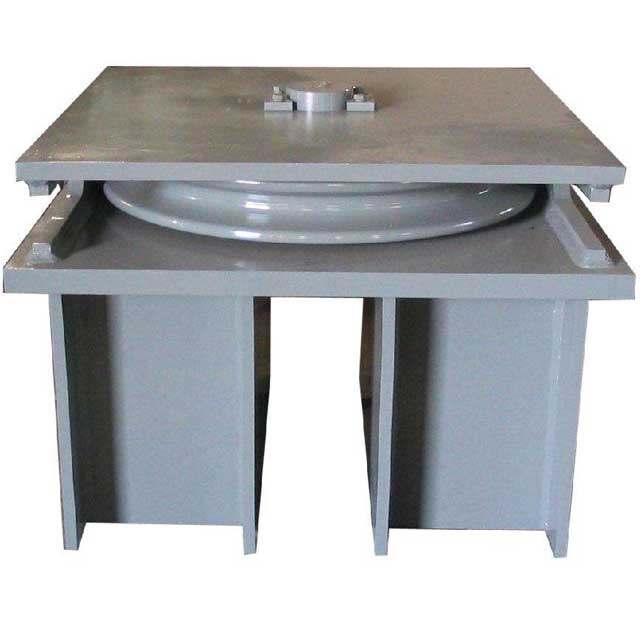
Advantages
- Efficient Lateral Cable Guidance: Horizontal roller fairleads excel in applications where cables need to move horizontally or laterally. These fairleads provide a straight and clear path for cables to follow, ensuring smooth and controlled movement. This is crucial in industries that rely on cable handling systems, such as towing or cable spooling.
- Even Load Distribution: Horizontal fairleads help evenly distribute the weight of the cable or rope across the rollers. This uniform load distribution reduces the risk of cable deformation, tangling, or damage, which is particularly important for long or heavy cables used in industrial operations.
- Durability and Longevity: With their robust construction and low-friction operation, horizontal roller fairleads are highly durable and built to last. The rollers, often made from materials like stainless steel or durable plastics, ensure that the fairlead can withstand the pressures of frequent or heavy-duty use.
- Versatility in Application: Horizontal roller fairleads are adaptable to a variety of system types. Whether used for guiding cables through a pulley system, managing material handling conveyors, or controlling towing lines, these fairleads offer a versatile solution for horizontal cable management.
- Prevention of Cable Damage: By providing a smooth path for the cable or rope, horizontal roller fairleads prevent friction-related damage. Cables and ropes are less likely to suffer from wear or abrasion, helping extend their useful life and reduce maintenance costs.
Limitations
- Space Requirements: Horizontal roller fairleads are generally bulkier than vertical roller fairleads, especially in systems that require multiple rollers to guide the cable. The additional space needed to accommodate these fairleads can be a limitation in confined or space-constrained environments.
- Complexity in Direction Changes: While horizontal fairleads work efficiently for lateral movement, they may not be as effective in situations requiring complex changes in cable direction. Additional components like multi-directional fairleads or turntables may be needed to change the cable’s path without causing tangling or excessive wear.
- Not Suitable for Vertical or Mixed Movements: Horizontal roller fairleads are specifically designed for horizontal movements. They are not suitable for vertical applications or systems where cables need to move up or down, as their orientation is optimized only for lateral force.
Common Applications
1. Marine Towing and Mooring Systems
One of the most common applications for horizontal roller fairleads is in marine towing systems. Horizontal fairleads guide the towing cables that pull ships, barges, or boats. The fairleads ensure that the cable moves smoothly across the deck or through a channel, reducing friction and wear on the cable.
Example: Towing lines used in offshore oil rigs or tugboats benefit from horizontal roller fairleads to guide heavy-duty cables that connect to ships or barges.
2. Cable Spooling and Handling Systems
Horizontal roller fairleads are extensively used in cable spooling systems, where cables need to be wound or unwound efficiently. These fairleads ensure that the cable is evenly distributed across the spool and that no tangling occurs during the process.
Example: In electrical or fiber optic cable production, horizontal fairleads guide the cables as they are spooled onto large reels, ensuring smooth operation and minimal damage to the cable.
3. Conveyor Systems
In material handling systems, particularly in conveyor belts, horizontal roller fairleads are used to guide the cables or ropes that power the conveyor. These fairleads help maintain the alignment of the cables, ensuring that the conveyor runs smoothly and efficiently.
Example: In warehouses or factories, horizontal fairleads ensure the proper alignment of cables used to drive conveyor systems, keeping materials moving efficiently from one point to another.
4. Construction and Crane Applications
Horizontal roller fairleads are often found in construction sites and cranes, where they help guide cables used to lift and move materials horizontally. The fairleads help ensure that the lifting cables move smoothly over the crane’s pulleys or guides, reducing wear and preventing potential malfunctions.
Example: In tower cranes, horizontal fairleads help guide the hoist cables as they move materials horizontally across the construction site.
5. Towing and Docking Systems
Horizontal roller fairleads play a key role in towing and docking operations where boats, ships, or barges need to be guided along a horizontal path. The fairleads ensure that cables are pulled with minimal friction and tangling, making these operations smoother and more efficient.
Example: In port docking systems, horizontal fairleads guide the mooring lines that secure a vessel to the dock, ensuring easy deployment and retrieval of ropes.
6. Winching Systems
Horizontal roller fairleads are commonly used in winching systems for both marine and land-based applications. These systems require the cable to be guided across horizontal planes to pull heavy loads or materials.
Example: In off-road winching, horizontal fairleads guide the winch cable as it pulls vehicles or heavy loads, ensuring smooth retraction and extension of the rope.
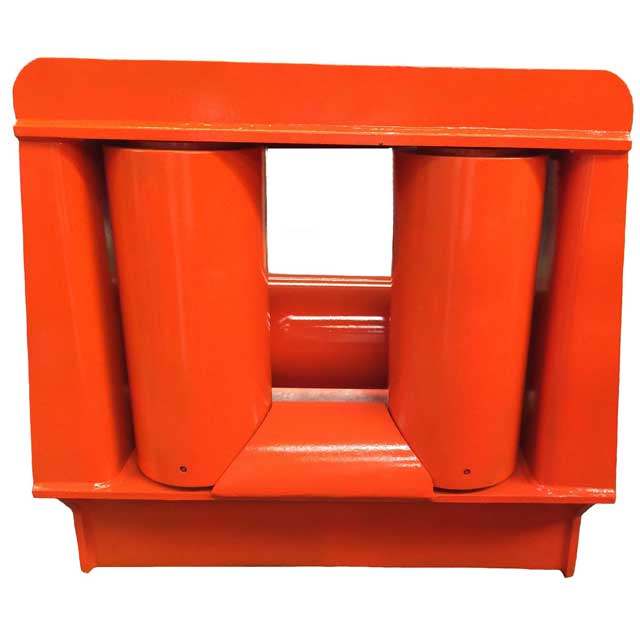
Key Differences Between Vertical vs. Horizontal Roller Fairleads
This chart highlights the primary distinctions between the two types of fairleads, making it easier to decide which is best suited for a specific application.
| Feature | Vertical Roller Fairleads | Horizontal Roller Fairleads |
| Roller Orientation | Rollers are positioned vertically (perpendicular to the ground). | Rollers are positioned horizontally (parallel to the ground). |
| Primary Function | Designed to guide cables or ropes in vertical or upward/downward directions. | Designed to guide cables or ropes in horizontal or lateral directions. |
| Load Distribution | Typically handles vertical load distribution, ensuring minimal sagging in ropes. | Distributes horizontal loads, ensuring smooth lateral movement of ropes or cables. |
| Space Requirements | Requires less horizontal space but may need more vertical clearance. | Requires more horizontal space but can fit into systems with limited vertical clearance. |
| Adjustment Flexibility | Limited in adjusting for different cable sizes, typically fixed for vertical loads. | Can often be adjusted to fit different cable diameters and configurations. |
| Efficiency in Horizontal Movements | Less effective for horizontal cable movement or guidance. | Ideal for smooth horizontal cable movement and reduced friction. |
| Maintenance Complexity | Requires maintenance to ensure rollers remain aligned vertically for smooth operation. | Requires maintenance to ensure smooth movement and alignment of rollers horizontally. |
| Suitability for Directional Changes | Well-suited for systems requiring vertical lifting and changes in direction. | Best for systems requiring smooth horizontal movement or gradual turns. |
| Impact on Cable Wear | Can cause higher friction in horizontal movements if used incorrectly. | Minimizes friction in horizontal movements, reducing wear and tear on cables. |
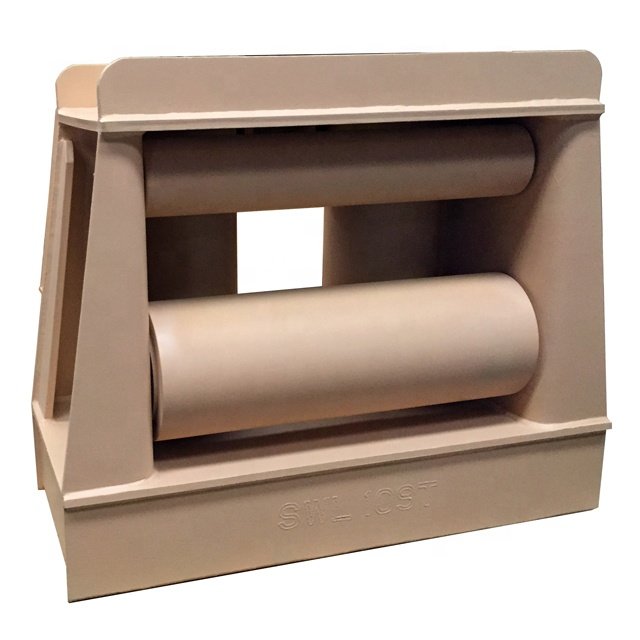
Key Factors to Consider for Choosing Between Vertical and Horizontal Roller Fairleads
When choosing between vertical roller fairleads and horizontal roller fairleads, several key factors must be considered to ensure that the right type of fairlead is selected for your application.
1. Application Type
- Vertical Roller Fairleads: Ideal for systems that involve vertical movement of cables or ropes, such as cranes, hoisting systems, or elevators. These fairleads are designed to handle forces acting in a vertical direction.
- Horizontal Roller Fairleads: Best suited for systems that require horizontal guidance of cables, such as towing systems, cable spooling, material handling conveyors, and winching systems where lateral movement is essential.
2. Load Direction
- Vertical Roller Fairleads: Designed to handle vertical loads and manage forces that act upwards or downwards, such as in hoisting operations or lifting systems.
- Horizontal Roller Fairleads: Designed to manage horizontal loads, guiding cables in a lateral direction, ensuring smooth movement of ropes or cables across horizontal planes, such as in towing or spooling applications.
3. Space Constraints
- Vertical Roller Fairleads: Typically require less horizontal space but may need more vertical clearance. If space is limited horizontally but there is more room for height, vertical fairleads are a better choice.
- Horizontal Roller Fairleads: Require more horizontal space but can be ideal for systems with more limited vertical clearance, where the movement of cables happens along the length of a path or system.
4. Flexibility and Adjustability
- Vertical Roller Fairleads: Generally more fixed in their design, as they are made for specific vertical lifting applications. Limited adjustability for different cable diameters.
- Horizontal Roller Fairleads: Often come with adjustable features to accommodate various cable diameters and configurations, offering greater versatility for multiple types of cables and systems.
5. Cable Wear and Friction
- Vertical Roller Fairleads: While vertical systems are effective at managing vertical movement, horizontal movements may lead to more friction and wear if the same fairlead is used for lateral guidance.
- Horizontal Roller Fairleads: Provide a smooth and low-friction surface for horizontal cable movement, reducing wear and tear on cables and ensuring longer life for both the fairlead and the cable.
6. Maintenance Considerations
- Vertical Roller Fairleads: May require more frequent maintenance to ensure that rollers remain aligned vertically and are free from debris that can obstruct vertical cable movement.
- Horizontal Roller Fairleads: Require regular maintenance to ensure that rollers remain aligned horizontally and that cables are moving smoothly without causing excessive wear to the rollers or cables.
7. Directional Changes
- Vertical Roller Fairleads: Effective at handling vertical changes in direction but are less suitable for changes in horizontal direction without additional equipment.
- Horizontal Roller Fairleads: Better suited for gradual or controlled horizontal changes in direction, making them ideal for guiding cables along straight or curved paths.
8. Durability and Environmental Considerations
- Vertical Roller Fairleads: Designed to withstand the forces and wear associated with vertical lifting and tensioning. However, they may not be suitable for harsh environments unless specifically built to be resistant to corrosion or weather.
- Horizontal Roller Fairleads: Often constructed to handle longer distances and heavier loads. They may also be designed to be more corrosion-resistant, especially in outdoor or marine environments.
9. Cost Considerations
- Vertical Roller Fairleads: May be less expensive in systems that only require vertical guidance. They tend to be simpler and more focused on specific tasks, potentially reducing initial costs.
- Horizontal Roller Fairleads: Tend to be more expensive due to the need for additional components for smooth horizontal movement. The adjustability and flexibility in their design may also increase the cost, but they offer a better solution for systems that involve continuous horizontal movement.
Summary
- For vertical applications (such as lifting, hoisting, or marine anchoring), vertical roller fairleads are usually the best option. They allow for efficient cable management and reduced wear, making them ideal for winches and cranes.
- For horizontal movement (like towing, cable reels, and material handling systems), horizontal roller fairleads are typically preferred. Their ability to handle lateral movement and evenly distribute the load makes them perfect for such applications.
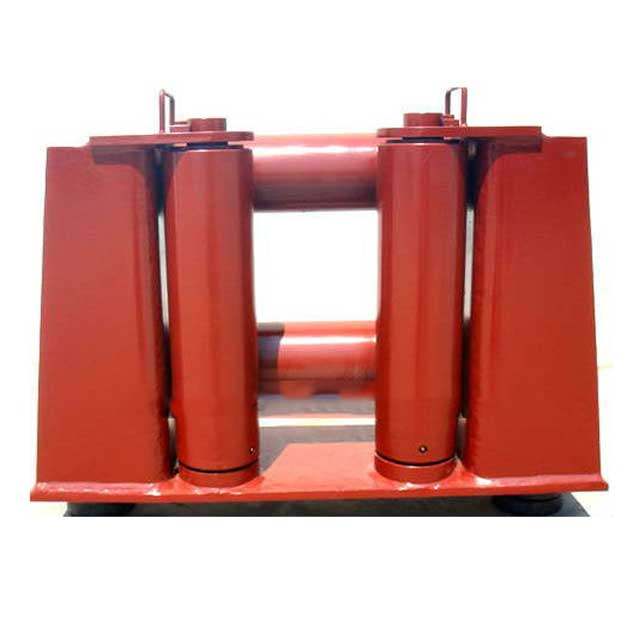
Final Thoughts
Vertical and horizontal roller fairleads are both vital for ensuring smooth and efficient cable management in various systems. Understanding the unique advantages of each type and choosing the right fairlead for your specific application will help optimize performance, reduce wear and extend the life of your equipment.


